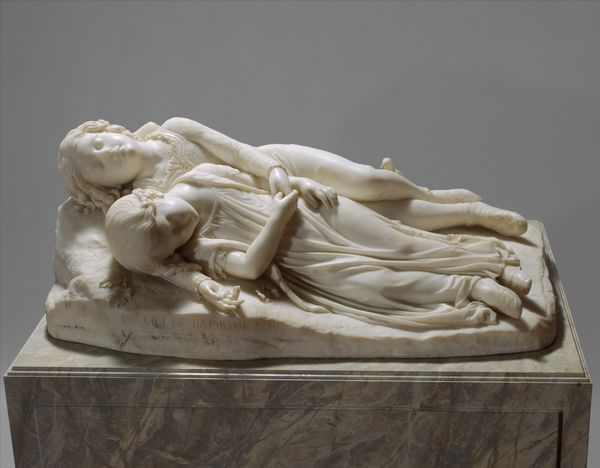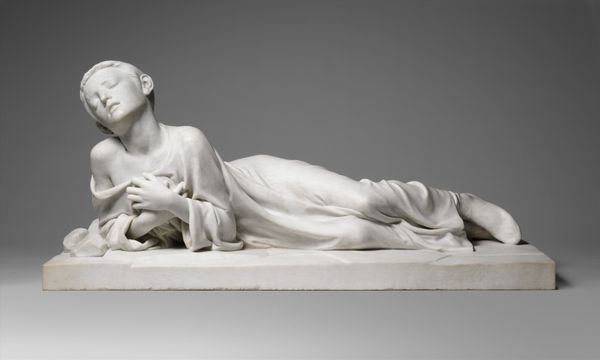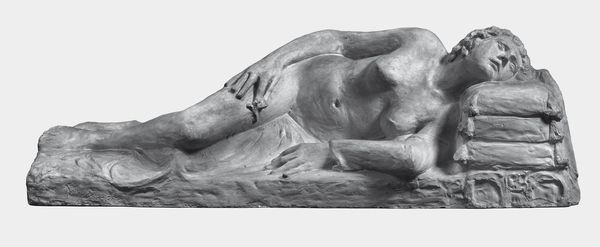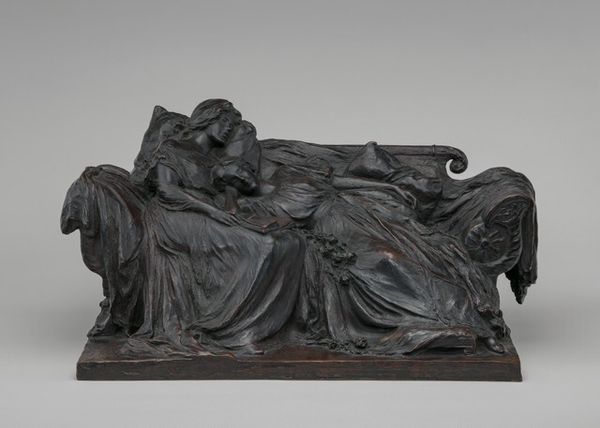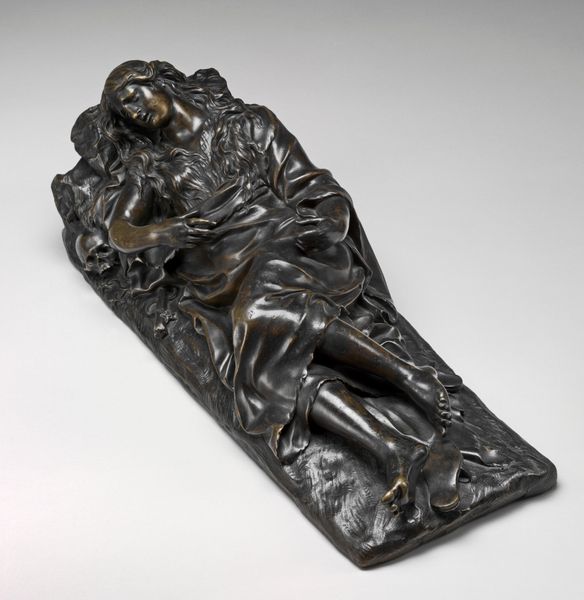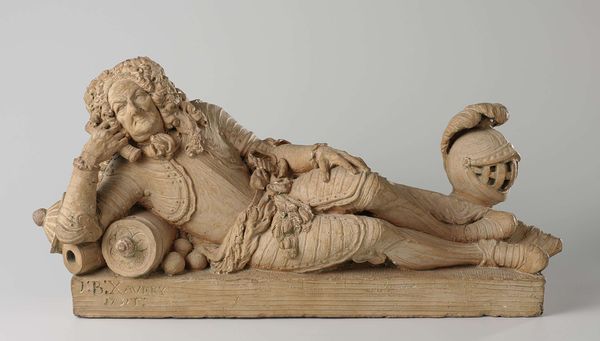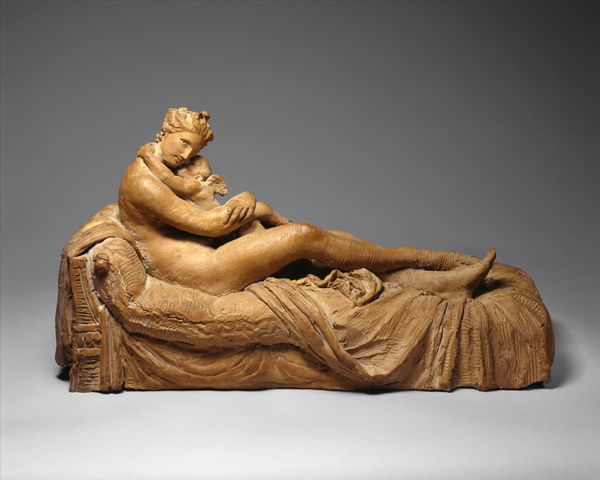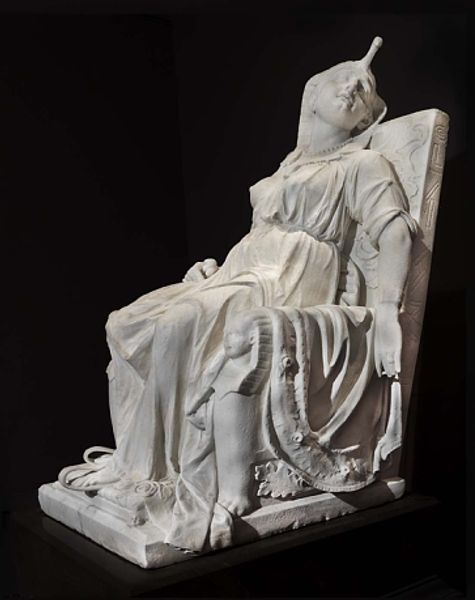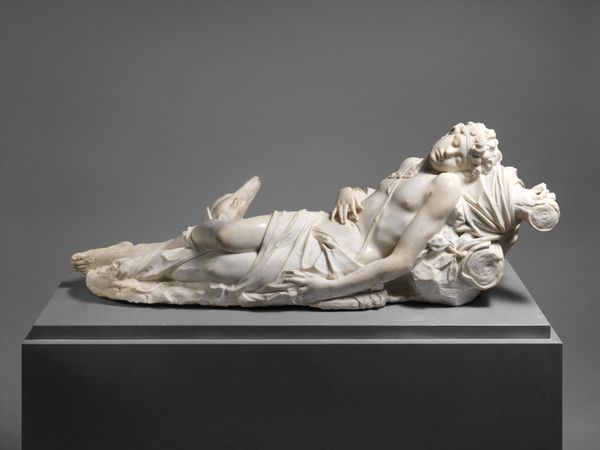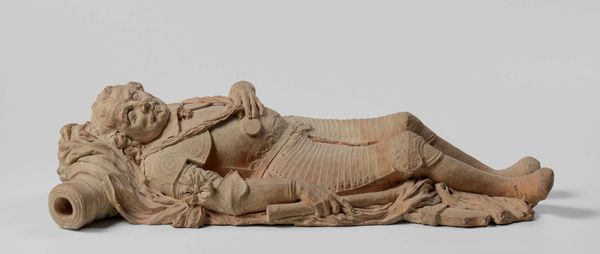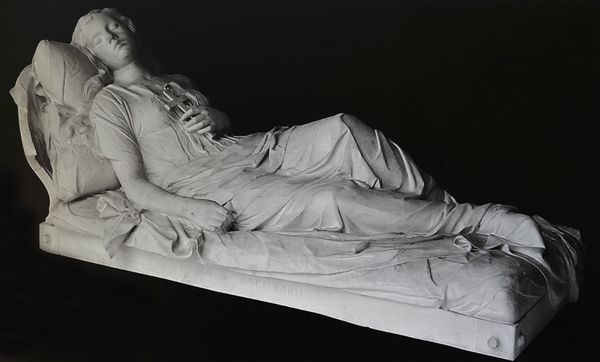
sculpture, wood, marble
#
portrait
#
sculpture
#
mannerism
#
figuration
#
11_renaissance
#
sculpture
#
wood
#
trompe-l'oeil
#
marble
Dimensions: height 10.5 cm, width 61.8 cm, depth 25.8 cm, height 26 cm
Copyright: Rijks Museum: Open Domain
Hendrick de Keyser created this terracotta sculpture, "William I, Prince of Orange, Lying in State," around the turn of the 17th century. Its subdued palette and horizontal composition evoke a sense of solemnity. The textures, from the smooth surfaces of the prince's face to the intricate folds of the draped cloth, invite contemplation. Keyser masterfully uses the medium to convey a profound sense of stillness, typical of the Protestant art of this period. The prince's effigy lies upon an elevated, ornamental platform, suggesting a stage where the drama of leadership and mortality is enacted. Notice the dog at the feet of the prince. Its presence serves as a signifier of fidelity and vigilance, a common trope in funerary art. The sculpture's aesthetic power resides in its ability to articulate complex ideas about power, duty, and remembrance through a formal language of shape, texture, and representational codes. The artwork presents not just an aesthetic experience, but also an invitation to reflect on the symbolic weight of its cultural and historical significance.
Comments
rijksmuseum about 2 years ago
⋮
This terracotta is the model for the life-size marble statue that is the focal point of the tomb of William of Orange in the Nieuwe Kerk in Delft. William was assassinated in 1584. The dead prince is portrayed in a surprisingly informal fashion: he wears a fur-lined tabard and a nightcap, a favourite garb for scholars in their study. He seems to be lying down for just a moment to rest.
Join the conversation
Join millions of artists and users on Artera today and experience the ultimate creative platform.
